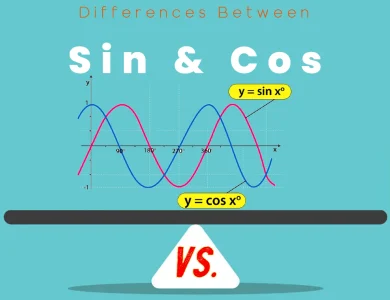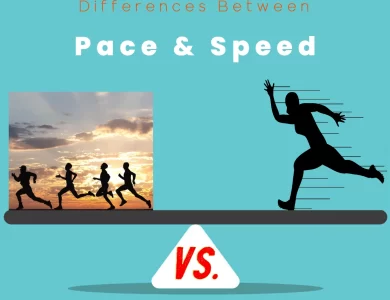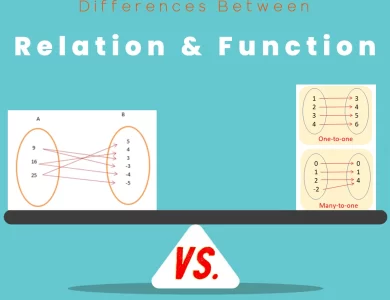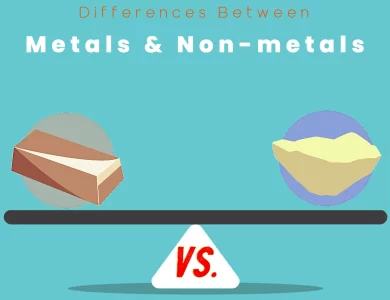
| Aspect | Mile | Kilometer (km) |
|---|---|---|
| Origin and History | Derived from ancient Roman “milia” | Part of the metric system |
| Length Conversion | 1 mile = 1.60934 kilometers | 1 kilometer = 0.62137 miles |
| Measurement Systems | Imperial or US customary system | Metric system |
| Geographical Usage | Common in the US, UK, and a few others | Predominantly used globally |
| Decimal Progression | Not inherently decimal | Base-10 progression |
| Road Distances | Often used for road signage and travel | Standard for road signage |
| Speed Limits | Miles per hour (mph) | Kilometers per hour (km/h) |
| Scientific Research | Less common in scientific contexts | Widely used in scientific research |
| Global Trade | Less standard for international trade | Standard unit for cross-border trade |
| Fitness Tracking | Common unit in fitness apps and wearables | Frequently used for tracking |
| Environmental Impact | Not as common in fuel efficiency metrics | Used for fuel efficiency calculations |
| Cultural Significance | Carries historical and cultural value | Represents global unity |
| Educational System | Taught in countries using the imperial system | Standard in metric education |
| Communication | Embedded in idiomatic expressions | Universal language for precision |
In the vast expanse of our world, distance is a concept that shapes our lives. Whether we’re planning a road trip, measuring athletic performance, or understanding geographical dimensions, the units we choose to quantify distance play a crucial role. Two widely used units for measuring distance are the mile and the kilometer (km). While both serve the same purpose, they originate from different systems of measurement and hold distinct characteristics. In this article, we’ll embark on a journey to uncover the key differences between miles and kilometers, shedding light on their origins, usage, and conversions.
Differences Between Mile vs Kilometer (km)
The main difference between a mile and a kilometer lies in their origins and usage. Miles, with roots tracing back to ancient Rome, are prevalent in countries like the US and UK. They often find use for road distances and speed limits. On the other hand, kilometers are an integral part of the metric system, embraced globally. They serve a pivotal role in scientific research, international trade, and road signage across most nations. The distinction between these units not only reflects measurement systems but also underscores the diversity and interconnectedness of the world.
The Origins and Evolution
Mile: A Historical Perspective
The mile, a unit of length, has a storied history that traces back to ancient Roman times. The word “mile” is derived from the Latin word “milia,” meaning a thousand, indicating the notion of one thousand paces as the original measure. In the Roman system, a mile was equivalent to 1,000 passus, where each passus represented a double step. These miles were crucial for measuring distances on roads, aiding in effective military logistics and administration of vast territories.
Over the centuries, the length of the mile varied across different regions, leading to inconsistencies. However, in 1593, the British Parliament officially standardized the mile to 5,280 feet. This statute mile became the basis for the Imperial and later the United States customary system of measurements. Today, countries like the United States and the United Kingdom primarily use the statute mile.
Kilometer: The Metric Marvel
The kilometer, on the other hand, emerges from the metric system, a comprehensive and coherent system of measurement introduced during the French Revolution. The metric system aimed to address the convoluted mishmash of measurement units that existed at the time and establish a universally applicable measurement framework. The foundation of the metric system is the meter, defined originally as one ten-millionth of the distance from the North Pole to the equator.
From this meter, other units were derived, including the kilometer, where “kilo” denotes a factor of one thousand. Thus, a kilometer represents one thousand meters. The metric system’s simplicity and scalability quickly gained traction across the world, becoming the standard measurement system for most countries. Its ease of use in calculations and conversions made it a practical choice for scientific, industrial, and daily applications.
Usage and Contextual Differences
Miles: On the Road and Beyond
The mile’s usage extends across various domains, with a notable presence in countries that adhere to the Imperial or United States customary system. In these regions, miles are the preferred unit for measuring road distances, speed limits, and aviation metrics. For instance, speed limits on highways are often expressed in miles per hour (mph), and distances between cities are given in miles. The aviation industry also employs nautical miles for air and marine navigation.
Beyond transportation, the mile finds its place in athletic realms. Races, particularly in countries using the mile, are often measured in this unit. The iconic “four-minute mile” barrier was famously broken by Roger Bannister in 1954, a feat that signified a remarkable milestone in human athletic performance.
Kilometers: Embracing the Metric Advantage
The kilometer is embraced by the majority of the world’s nations due to its adoption within the metric system. It shines as a versatile unit that seamlessly fits into scientific calculations, engineering projects, and day-to-day measurements. In road signage, countries following the metric system use kilometers to denote distances, helping travelers gauge how far their destinations are. Similarly, speed limits are indicated in kilometers per hour (km/h), offering a clear reference for drivers.
Scientific research, too, relies heavily on kilometers for expressing geographical dimensions, celestial distances, and molecular scales. The metric system’s decimal nature simplifies calculations and conversions, making it an invaluable asset in laboratories and academic disciplines.
Conversion Conundrums: Miles to Kilometers
Converting between miles and kilometers is a common task, especially in our globalized world. Fortunately, the conversion between these two units is straightforward, thanks to established conversion factors.
1 mile equals approximately 1.60934 kilometers. This means that to convert miles to kilometers, you can multiply the number of miles by 1.60934. For example, if you have a distance of 5 miles, the equivalent distance in kilometers would be approximately 8.0467 km.
| Miles | Kilometers |
|---|---|
| 1 | 1.60934 |
| 2 | 3.21868 |
| 3 | 4.82802 |
| 4 | 6.43736 |
| 5 | 8.0467 |
Geographical Considerations
The choice between using miles or kilometers often depends on the geographical location and the system of measurement predominantly followed in that region. For instance, the United States and a few other countries continue to utilize the imperial system, with miles as a key component. In contrast, the metric system, including kilometers, is the norm in most countries worldwide.
In terms of geographical coverage, miles and kilometers yield slightly different results due to their distinct lengths. For instance, in a country using the metric system, a road trip of 100 kilometers might appear longer when converted to miles, around 62.14 miles, which can affect travelers’ perceptions of distance.
Urban Planning and Infrastructure
In urban planning and infrastructure development, the choice between miles and kilometers can impact various aspects of design. Countries utilizing kilometers might find it easier to plan and create efficient transportation networks, as the metric system offers a decimal progression that aligns well with mathematical calculations. In contrast, regions following the mile-based system might face slightly more complexity in such endeavors due to the non-decimal nature of the imperial system.
Cultural Significance and Perception
Miles: An Emblem of Tradition
The mile holds deep cultural significance, especially in areas where it has been in use for centuries. It becomes more than just a unit of measurement; it’s a symbol of history, a connection to ancient civilizations, and a testament to the endurance of certain measurement systems. The persistence of miles in the United Kingdom, for instance, reflects the nation’s attachment to its heritage, as well as its unique blend of traditional and modern perspectives.
Kilometers: A Global Lexicon
The kilometer, as a product of the metric system, embodies a sense of global unity. Its uniformity is a testament to international collaboration, as most countries have adopted the metric system for its convenience and coherence. This widespread acceptance of the kilometer signifies a harmonious effort to transcend cultural differences and establish a shared language of measurement.
Economic and Commercial Implications
Global Trade and Commerce
In the world of international trade and commerce, standardized units play a pivotal role in facilitating smooth transactions. The metric system, with the kilometer as its integral part, offers a straightforward and universal way to quantify distances, sizes, and quantities. This consistency contributes to efficient cross-border dealings and promotes a seamless flow of goods between nations.
For businesses operating on a global scale, having a grasp of both miles and kilometers is indispensable. Conversions between the two units are not only vital for logistics but also for effective communication with partners, suppliers, and customers across the world.
Educational Significance
Teaching Measurement Systems
The choice between miles and kilometers also permeates educational systems. Countries aligning with the metric system find it easier to teach measurement concepts to students due to the system’s inherent simplicity and logic. Additionally, the metric system’s base-10 structure facilitates the teaching of mathematical principles, helping students grasp the relationship between different units effortlessly.
Preserving Cultural Diversity
In regions where the imperial system is deeply ingrained, teaching the historical significance of units like the mile can be an opportunity to connect students with their cultural heritage. While embracing the metric system’s advantages, educators might choose to include the historical context of the mile as a way to foster a well-rounded understanding of measurements.
Practical Applications: Mile vs. Kilometer
Travel and Navigation
When it comes to travel and navigation, the choice between using miles or kilometers can impact how we plan and perceive distances. In regions where the mile is prevalent, road signs, maps, and travel guides often display distances in miles. This can provide a sense of familiarity for local travelers who are accustomed to this unit. On the other hand, in countries using kilometers, travelers benefit from a system that aligns with international standards, making it easier to interpret distances and plan routes regardless of the destination.
Additionally, navigation technology, such as GPS devices and mapping apps, offers the flexibility to switch between miles and kilometers based on user preferences. This adaptability ensures that travelers can navigate comfortably, regardless of the measurement unit used in a particular region.
Fitness and Health Tracking
The choice of using miles or kilometers also impacts how individuals track their fitness and health goals. In the realm of running, jogging, and cycling, both units are commonly employed to measure distances covered during workouts. Some fitness apps and wearable devices allow users to select their preferred unit for tracking. This flexibility caters to individuals who may have grown up with one system but now operate in an environment that predominantly uses the other.
Choosing between miles and kilometers for fitness tracking is a matter of personal preference and convenience. The most important factor is consistency, as it allows individuals to accurately monitor their progress and set achievable fitness targets.
Communication and Language
Miles: Language and Idioms
The use of miles goes beyond mere measurement; it has woven its way into language and idiomatic expressions. Phrases like “going the extra mile” have become ingrained in English vernacular, symbolizing dedication and effort beyond the norm. While the literal meaning of the mile might not resonate in the same way in countries using kilometers, the cultural impact of these idioms remains significant.
Kilometers: A Universal Language
In a world interconnected by technology and communication, the kilometer stands out as a universal language of measurement. Scientific research, international collaborations, and cross-cultural exchanges benefit from the ease of understanding and conversion that the metric system offers. This universality enhances clarity and prevents misunderstandings, fostering effective global communication.
Technical and Scientific Precision
Precision in Science and Engineering
In fields requiring precision and accuracy, such as engineering and scientific research, the metric system’s decimal nature and scalability make it the preferred choice. Kilometers, with their straightforward relationship to meters, simplify calculations involving scale models, dimensions, and conversions. This simplification aids engineers in designing structures, vehicles, and systems with utmost accuracy.
Additionally, the metric system’s close ties to the International System of Units (SI) further enhance its applicability in scientific contexts. The coherent and interrelated nature of SI units facilitates measurements across diverse scientific disciplines.
Environmental Impact
Kilometers and Fuel Efficiency
In the context of fuel efficiency and environmental considerations, the choice between miles and kilometers becomes significant. Fuel efficiency is often measured in terms of distance per unit of fuel consumption. In countries using the metric system, this measurement is expressed as kilometers per liter (km/L) or liters per 100 kilometers (L/100 km).
Using kilometers for fuel efficiency metrics aligns with the metric system’s global acceptance, allowing for straightforward comparisons and calculations. This consistency can influence consumers’ choices and encourage sustainable driving practices.
Conclusion: Measuring the World Around Us
Miles and kilometers, though fundamentally serving the same purpose of measuring distance, weave intricate patterns of culture, convenience, and global unity. The choice between these units extends far beyond numerical values; it reflects historical legacies, educational systems, and practical applications that shape our daily lives.
In a world interconnected by travel, trade, and technology, the ability to navigate between miles and kilometers is more than a skill—it’s a testament to our adaptability and understanding. As the two units continue to coexist, they remind us that measurements, like language, are versatile tools that evolve with society’s needs and aspirations. Whether we’re deciphering road signs, calculating scientific variables, or simply appreciating the world’s vastness, miles and kilometers offer us a way to measure and marvel at the beauty of our diverse and interconnected planet.
FAQs
The primary distinction lies in their origins and usage. The mile, rooted in ancient Rome, is prevalent in countries like the US and UK, often used for road distances and speed limits. The kilometer, an integral part of the metric system, is globally embraced, utilized in scientific research, international trade, and road signage in most countries.
To convert miles to kilometers, multiply the number of miles by approximately 1.60934. For instance, 5 miles would be approximately equal to 8.0467 kilometers.
The choice often stems from the prevailing measurement system. Countries that follow the Imperial or US customary systems use miles, while those adopting the metric system, including most of the world, use kilometers due to its decimal nature and international standardization.
The kilometer is preferred in scientific research and engineering due to the metric system’s coherence and scalability. Its decimal progression simplifies calculations involving scale models, dimensions, and conversions.
Yes, indeed. The phrase “going the extra mile” has become synonymous with putting in extra effort. While idiomatic expressions related to miles might vary, the kilometer is more commonly used for precision and technical discussions.
In regions using miles, road signs and maps often display distances in this unit. For travelers accustomed to kilometers, the metric system offers a consistent way to gauge distances and plan routes across different countries.
Both miles and kilometers are commonly used for tracking fitness activities. Various apps and devices allow users to select their preferred unit, ensuring flexibility for individuals regardless of their measurement background.
The kilometer’s integration into the metric system, adopted by most countries, offers a standardized way to communicate measurements. This uniformity enhances international collaboration and ensures clarity in fields like science, trade, and academia.
Consider your geographical location, the system you’re familiar with, and the context of your activities. Whether it’s driving, fitness tracking, or scientific research, familiarity and convenience should guide your choice.
Yes, modern navigation technology allows you to switch between miles and kilometers based on your preferences. This adaptability ensures a smooth navigation experience, regardless of the measurement unit used in a particular region.
Read More:
Contents
- Differences Between Mile vs Kilometer (km)
- The Origins and Evolution
- Usage and Contextual Differences
- Conversion Conundrums: Miles to Kilometers
- Navigating Landscapes: Mile vs. Kilometer
- Cultural Significance and Perception
- Economic and Commercial Implications
- Educational Significance
- Practical Applications: Mile vs. Kilometer
- Communication and Language
- Technical and Scientific Precision
- Environmental Impact
- Conclusion: Measuring the World Around Us
- FAQs






